The Beauty of Orchids
Orchids are often described as the most beautiful flowers in the world. While most orchids are found in the tropics, they are distributed worldwide and can be found on every single continent except Antarctica. Though orchid cultivation dates back to the middle of the 18th century in Europe, English explorers were the first to discover the rich orchid flora of South America. Today orchids still project an exotic image, inspiring many to continue the exploration for new or rare species. Orchids are the national flower in countries such as Belize, Brazil, Colombia, Costa Rica, Guatemala, Indonesia and Singapore. In Venezuela, orchids are featured on the nation’s currency. In Minnesota, the pink and white lady slipper (Cypripedium reginae) is the state flower.
Being the largest group of flowering plants with nearly 40,000 identified species, orchids are also the fastest growing segment of the nation’s $13 billion floriculture and nursery crops industry. The market for potted orchids has shown an increase in production and sales during the past 10 years, and orchids have quickly become the number-two potted flower in the United States. However, growers report that production does not meet the existing demand. Orchids have become increasingly popular thanks to new and improved cultivation and propagation techniques. Such advances allowed the mass propagation of orchids at reasonable costs to customers, in association with a profitable product for growers. Furthermore, the continuous efforts at hybridization have promoted the production of new hybrids with unusual flower colors, shapes and patterns.
Orchid growing has evolved from just a hobby for collectors to an international business, and today a network of countries participate in different steps of production, from the development of new hybrids through selection and multiplication of clones via tissue culture to the growth and sale of the final product. In Florida, orchids are now the leading potted flowering plant, generating more than $23 million in annual farmgate sales. There is also an increasing number of orchid societies nationwide dedicated to informing orchid lovers about cultural practices, new cultivars or hybrids, and rare species, as well as the organization of orchid judging, auctions, shows and exhibits.
Orchids are no longer an expensive luxury item and can be purchased at prices comparable to other flowering pot plants. Besides, by following a few basic cultural requirements, everyone can grow orchids in the home environment.
Species and Hybrids
Species and hybrids of six orchid genera have become popular with consumers and the retail market because they are easy to grow and produce beautiful flowers.
Phalaenopsis. Often called the moth orchid, this is the most popular of all potted orchids and the leading orchid in retail. Hybrids have been generated since 1886 aiming at new colors and patterns, and large, round, flat flowers arranged in arching sprays. This is probably the favorite orchid for consumers since it grows well under average home conditions.
Phalaenopsis flowers once a year, but healthy plants can be induced to flower a second time by cutting the flower tip off after the initial flowering. Phalaenopsis will grow well under indirect light or close to a window with partial sunlight. East windows are recommended, but south or west windows are adequate if shade is provided. Northern climates may require southern Á exposure. These orchids have also been successfully grown under artificial light, combining fluorescent and incandescent light bulbs to provide between 1,000-1,500 foot-candles for 12-16 hours daily.
Temperature should be maintained at 75-85° F during the day and no lower than 55° F during the night. Fall night temperatures around 55° F for several days will induce flowering. Relative humidity levels should be maintained between 50 and 80 percent. Air circulation is essential to keep leaf surfaces dry and prevent diseases. Plants should be watered to the saturation point of the medium, allowing excess water to drain completely. They should be watered again when the medium is nearly dry. Excess water may cause root rot. Watering should be adjusted according to the climate of a particular region. Dry climates may require watering every other day during the summer, while in cool winters watering is reduced to every 8-10 days. At the commercial level, a 20-10-20 fertilizer is usually applied at 100-150 ppm twice a week, incorporated to the irrigation water. For home growers, 30-10-10 applied twice a month should be adequate for bark-based media.
Dendrobium. This large and diverse genus commonly found in retail has been the backbone of the orchid cut-flower business for many years. The Dendrobium phalaenopsis species are the easiest to grow, producing a large number of flowers that last 3-4 weeks and, therefore, are very popular. In some other dendrobium species (e.g., Dendrobium cuthberstonii), flowers may remain open 8-10 months. The first hybrid was reported in 1855, and today’s breeding focuses on cut flower and compact potted-plant types for the floriculture industry. Light is essential for good growth and flower production, and bright light to 50-percent sun is usually recommended, with east, west and shaded south windows adequate for home growing. Ideal temperature ranges from 95- to 100-degree days to 60- to 65-degree nights. Humidity between 50 and 60 percent and good air circulation are also necessary. Dry conditions should be avoided, and plants should be kept evenly moist during active growth. When terminal leaf is observed at maturity, plants can be allowed to dry between waterings. Fertilization depends on the type of medium used; a general rule indicates a balanced ratio (10-10-10, 20-20-20, etc.) applied weekly at 1?4 or 1?2 the recommended rate.
Vanda. This genus’ popularity has increased dramatically, especially in tropical and sub-tropical regions. They are widely grown in Florida, and hybridizers have produced a large number of multigeneric crosses. Vandas produce a dozen or more flowers ranging in size from 2-4 inches. Colors vary from white to variegated patterns of brown, green and pink to blue and purple. Vandal hybridization dates back from 1893. Currently, breeders aim to obtain plants with flat and round flowers, and new and unusual colors or patterns. Ascocendas, hybrids between vanda and ascocentrum, have flowers that are about half the size of those on vandas and are best for outside in tropical conditions. Light depends on the type of vanda: strap-leaved (broad, flat leaves), terete (round, pencil-shaped leaves) and semi-teretes (hybrid between strap-leaved and terete). Terete vandas can be grown in full sun or under 25- to 35-percent shade. Strap-leaved and semi-terete vandas grow best in partial shade or indoors near a south window with bright light. Vandas grow well at 60- to 70-degree F nights and a maximum of 95-degree F days. Warm and humid days are essential for optimum growth, and 80-percent humidity is ideal, with good air circulation. Since vandas require plenty of water during active growth, but do not tolerate wet roots, plants are grown in slatted-wood baskets or in pots with coarse medium. A balanced fertilizer (20-20-20) applied once a week at full strength is recommended.
Cattleyas. Cattleyas were the most popular orchids for corsages until the 1960s and have been among the most commonly cultivated orchids. They were once called “Queen of Flowers.” The first hybrid was reported in 1859, and intense hybridization for over 75 years has generated a wide range of sizes and flower colors, including multigeneric crosses. For example, brassavola, laelia and cattleya have been crossed to create the multigeneric hybrid brassolaeliocattleya. A large number of nurseries specialize in the production of cattleyas.
Partial sun is adequate for these plants, with an east, west or lightly shaded south window recommended in the home, and 50- to 70-percent Á shade in greenhouses. Cattleyas tolerate high temperatures up to 100° F in shade, but grow best under 70- to 85-degree F days and 55- to 60-degree F nights. Watering should be frequent for seedlings; for mature plants a dry out period between waterings is adequate.
Oncidium. This large and diverse group contains more than 1,200 species occurring naturally from Florida to Brazil. Oncidiums are popularly known as “dancing-lady” orchids, due to the shape of their lips, which resemble the flaring skirt on a señorita. Flower color ranges from yellow or white and brown to purple, pink and red. This is a hardy orchid that will flower under adverse growing conditions. When given proper care, oncidiums produce even more flowers. Plants can be grown in bright light to nearly full sun or under 20- to 60-percent shade in greenhouses. East, south or west windows are ideal for the home. Temperatures of 80- to 85-degree F day and 55- to 60-degree F nights and 30-60 percent humidity are adequate. Thorough watering is recommended, with medium drying out half way through the pot before the next watering. A 30-10-10 fertilizer twice a month is recommended for plants in a bark-based medium. Oncidium hybridization is relatively new compared to other genera, with the first hybrid registered in 1909. However, interesting hybrids have been generated, such as Oncidium Sharry Baby ‘Sweet Fragrance’ AM/AOS, whose flowers smell like chocolate and vanilla.
Epidendrum. This is one of the easiest and most prolific orchids to grow, producing many 1-inch pastel flowers most of the year. There are approximately 500 species that occur naturally from the coastal plain of North Carolina to Brazil. Several reed-stem types grown today are hybrids created from species collected from nature, although no reference exists on the first hybrid created. These can be grown in outdoor gardens in South Florida or in pots elsewhere and are excellent candidates for use as landscape specimens. Cultural practices are similar to those for cattleyas. Epidendrum require plenty of light, with indirect sunlight once established. East windows are best, but they can also be grown in screened patios. A range of 50-80° F is adequate overall. They require plenty of water during active growth, reducing watering to three times a week when mature. Medium should provide good drainage. A balanced fertilizer (20-20-20) is recommended at half strength every two weeks.
As a general rule, cattleya, dendrobium, epidendrum and oncidium should be repotted every 2-3 years as the growing medium decomposes or new plant growth extends over the container edge. Phalaenopsisand vanda do not need to be repotted as often.





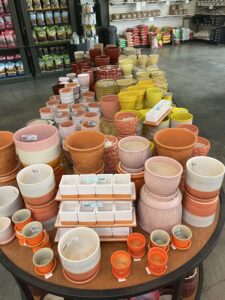
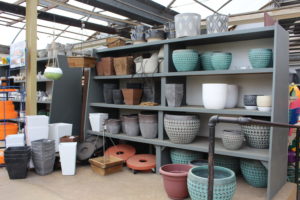
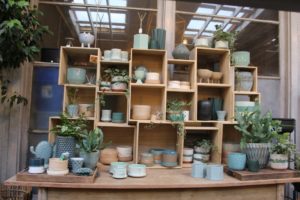
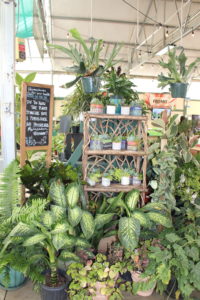

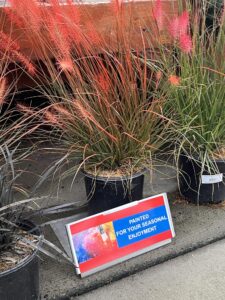



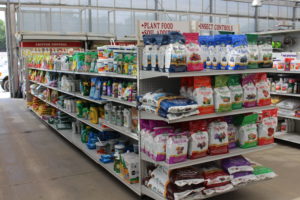
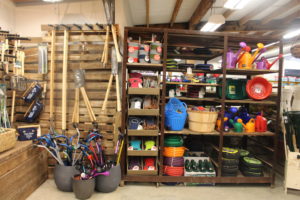
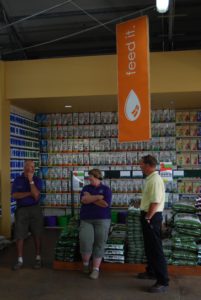
 Videos
Videos





